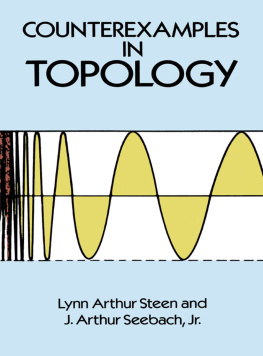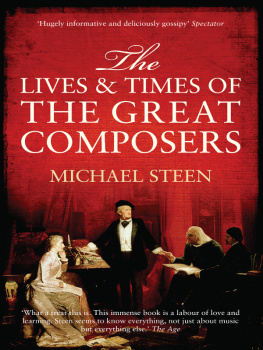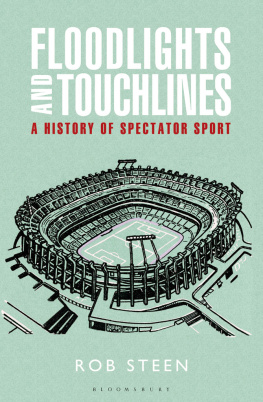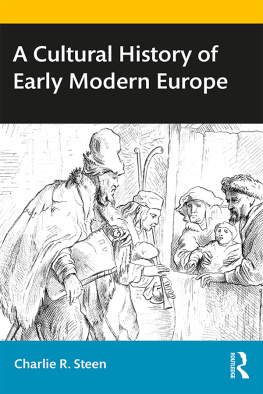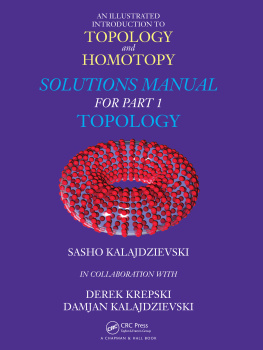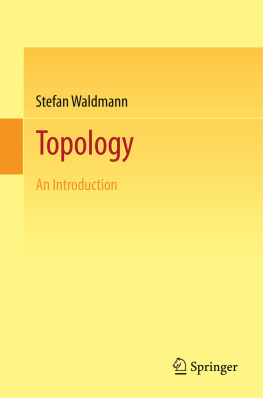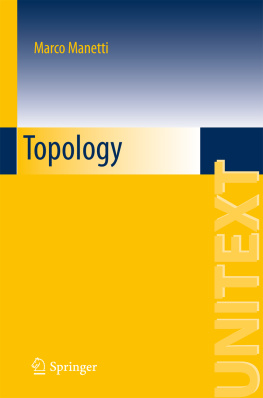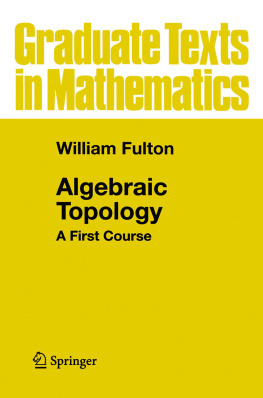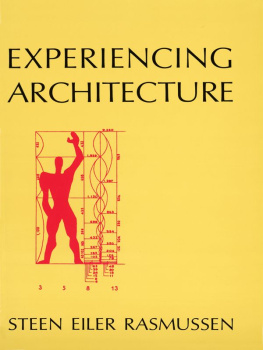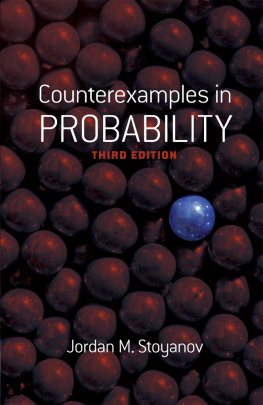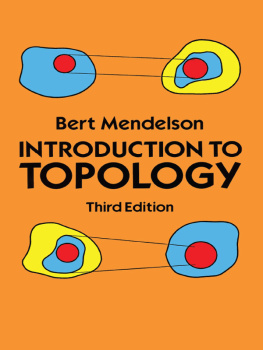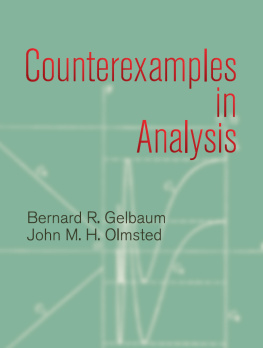Steen - Counterexamples in Topology
Here you can read online Steen - Counterexamples in Topology full text of the book (entire story) in english for free. Download pdf and epub, get meaning, cover and reviews about this ebook. publisher: Dover Publications, genre: Religion. Description of the work, (preface) as well as reviews are available. Best literature library LitArk.com created for fans of good reading and offers a wide selection of genres:
Romance novel
Science fiction
Adventure
Detective
Science
History
Home and family
Prose
Art
Politics
Computer
Non-fiction
Religion
Business
Children
Humor
Choose a favorite category and find really read worthwhile books. Enjoy immersion in the world of imagination, feel the emotions of the characters or learn something new for yourself, make an fascinating discovery.
Counterexamples in Topology: summary, description and annotation
We offer to read an annotation, description, summary or preface (depends on what the author of the book "Counterexamples in Topology" wrote himself). If you haven't found the necessary information about the book — write in the comments, we will try to find it.
Steen: author's other books
Who wrote Counterexamples in Topology? Find out the surname, the name of the author of the book and a list of all author's works by series.
Counterexamples in Topology — read online for free the complete book (whole text) full work
Below is the text of the book, divided by pages. System saving the place of the last page read, allows you to conveniently read the book "Counterexamples in Topology" online for free, without having to search again every time where you left off. Put a bookmark, and you can go to the page where you finished reading at any time.
Font size:
Interval:
Bookmark:
Counterexamples in Topology
Lynn Arthur Steen
Professor of Mathematics, Saint Olaf College
and
J. Arthur Seebach, Jr.
Professor of Mathematics, Saint Olaf College
DOVER PUBLICATIONS, INC.,
New York
Copyright
Copyright 1970, 1978 by Springer-Verlag New York Inc.
All rights reserved.
Bibliographical Note
This Dover edition, first published in 1995, is an unabridged and unaltered republication of the work published by Springer-Verlag New York Inc., New York, 1978, under the title Counterexamples in Topology, Second Edition. The first edition was published in 1970 by Holt, Rinehart, and Winston, Inc., New York.
Library of Congress Cataloging-in-Publication Data
Steen, Lynn Arthur, 1941
Counterexamples in topology / Lynn Arthur Steen and J. Arthur Seebach, Jr.
p. cm.
Originally published: 2nd ed. New York : Springer-Verlag, cl978.
Includes bibliographical references (p. - ) and index.
ISBN-13: 978-0-486-68735-3 (pbk.)
ISBN-10: 0-486-68735-X (pbk.)
1. Topological spaces. I. Seebach, J. Arthur II. Title.
QA611.3.S74 1995
514.3dc20
95-12763
CIP
Manufactured in the United States by Courier Corporation
68735X08
www.doverpublications.com
Preface
The creative process of mathematics, both historically and individually, may be described as a counterpoint between theorems and examples. Although it would be hazardous to claim that the creation of significant examples is less demanding than the development of theory, we have discovered that focusing on examples is a particularly expeditious means of involving undergraduate mathematics students in actual research. Not only are examples more concrete than theoremsand thus more accessiblebut they cut across individual theories and make it both appropriate and necessary for the student to explore the entire literature in journals as well as texts. Indeed, much of the content of this book was first outlined by undergraduate research teams working with the authors at Saint Olaf College during the summers of 1967 and 1968.
In compiling and editing material for this book, both the authors and their undergraduate assistants realized a substantial increment in topological insight as a direct result of chasing through details of each example. We hope our readers will have a similar experience. Each of the 143 examples in this book provides innumerable concrete illustrations of definitions, theorems, and general methods of proof. There is no better way, for instance, to learn what the definition of metacompactness really means than to try to prove that Niemytzkis tangent disc topology is not metacompact.
The search for counterexamples is as lively and creative an activity as can be found in mathematics research. Topology particularly is replete with unreported or unsolved problems (do you know an example of a Hausdorff topological space which is separable and locally compact, but not -compact?), and the process of modifying old examples or creating new ones requires a wild and uninhibited geometric imagination. Far from providing all relevant examples, this book provides a context in which to ask new questions and seek new answers. We hope that each reader will share (and not just vicariously) in the excitement of the hunt.
Counterexamples in Topology was originally designed, not as a text, but as a course supplement and reference work for undergraduate and graduate students of general topology, as well as for their teachers. For such use, the reader should scan the book and stop occasionally for a guided tour of the various examples. The authors have used it in this manner as a supplement to a standard textbook and found it to be a valuable aid.
There are, however, two rather different circumstances under which this monograph could most appropriately be used as the exclusive reference in a topology course. An instructor who wishes to develop his own theory in class lecture may well find the succinct exposition which precedes the examples an appropriate minimal source of definitions and structure. On the other hand, Counterexamples in Topology may provide sufficiently few proofs to serve as a basis for an inductive, Moore-type topology course. In either case, the book gives the instructor the flexibility to design his own course, and the students a wealth of historically and mathematically significant examples.
A counterexample, in its most restricted sense, is an example which disproves a famous conjecture. We choose to interpret the word more broadly, particularly since all examples of general topology, especially as viewed by beginning students, stand in contrast to the canon of the real line. So in this sense any example which in some respect stands opposite to the reals is truly a Gegenbeispiel. Having said that, we should offer some rationale for our inclusions and omissions. In general we opted for examples which were necessary to distinguish definitions, and for famous, well known, or sinaply unusual examples even if they exhibited no new properties. Of course, what is well known to others may be unknown to us, so we acknowledge with regret the probable omission of certain deserving examples.
In choosing among competing definitions we generally adopted the strategy of making no unnecessary assumptions. With rare exception therefore, we define all properties for all topological spaces, and not just for, for instance, Hausdorff spaces.
Often we give only a brief outline or hint of a proof; this is intentional, but we caution readers against inferring that we believe the result trivial. Rather, in most cases, we believe the result to be a worthwhile exercise which could be done, using the hint, in a reasonable period of time. Some of the more difficult steps are discussed in the Notes at the end of the book.
The examples are ordered very roughly by their appropriateness to the definitions as set forth in the first section. This is a very crude guide whose only reliable consequence is that the numerical order has no correlation with the difficulty of the example. To aid an instructor in recommending examples for study, we submit the following informal classification by sophistication :
| Elementary: | 125, 2728, 3034, 38, 4(M7, 4950, 5259, 6264, 7374, 81, 8689, 97, 104, 109, 115123, 132135, 137, 139140. |
| Intermediate: | 26, 29, 3537, 39, 48, 51, 6572, 7580, 8285, 9091, 9396, 98102, 105108, 113114, 124, 126127, 130, 136, 138, 141. |
| Advanced: | 6061, 92, 103, 11G-U2, 125, 128129, 131, 142, 143. |
The discussion of each example is geared to its general level : what is proved in detail in an elementary example may be assumed without comment in a more advanced example.
In many ways the most useful part of this book for reference may be the appendices. We have gathered there in tabular form a composite picture of the most significant counterexamples, so a person who is searching for HausdorfT nonregular spaces can easily discover a few. Notes are provided which in addition to serving as a guide to the Bibliography, provide added detail for many results assumed in the first two sections. A collection of problems related to the examples should prove most helpful if the book is used as a text. Many of the problems ask for justification of entries in the various tables where these entries are not explicitly discussed in the example. Many easy problems of the form justify the assertion that have not been listed, since these can readily be invented by the instructor according to his own taste.
In most instances, the index includes only the initial (or defining) use of a term. For obvious reasons, no attempt has been made to include in the index all occurrences of a property throughout the book. But the General Reference Chart (pp. 170179) provides a complete cross-tabulation of examples with properties and should facilitate the quick location of examples of any specific type. The chart was prepared by an IBM 1130 using a program which enables the computer to derive, from the theorems discussed in .
Next pageFont size:
Interval:
Bookmark:
Similar books «Counterexamples in Topology»
Look at similar books to Counterexamples in Topology. We have selected literature similar in name and meaning in the hope of providing readers with more options to find new, interesting, not yet read works.
Discussion, reviews of the book Counterexamples in Topology and just readers' own opinions. Leave your comments, write what you think about the work, its meaning or the main characters. Specify what exactly you liked and what you didn't like, and why you think so.

